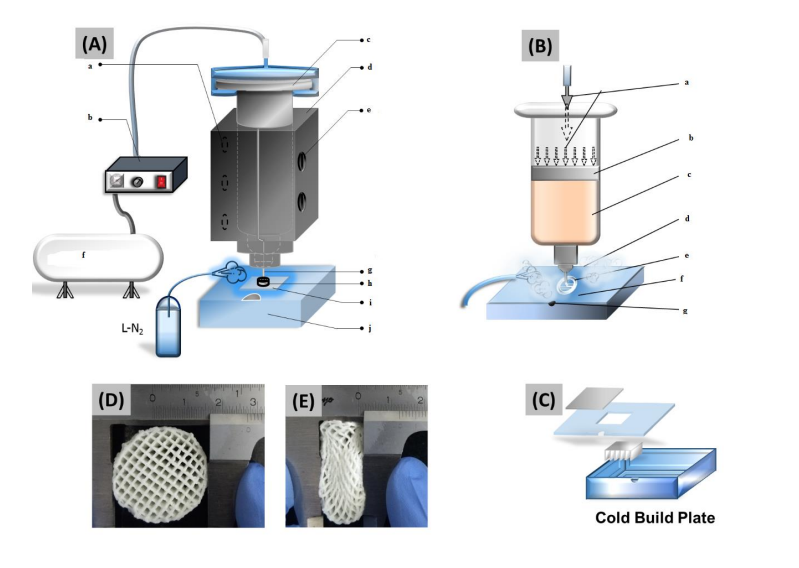This invention presents a novel, patient-specific 3D printed porous gel composite scaffold developed using a cryogenic extrusion-based method. It combines gelatin, carboxymethyl chitin (CMC), and hydroxyapatite (HA) to create biocompatible, biodegradable, and osteoconductive scaffolds. The technology enables multiscale control over scaffold structure-customized outer shape, gradient macro-architecture, and sub-micron porosity-without relying on synthetic growth factors. The use of programmable G-code allows creation of graded porosity in multiple directions, mimicking natural bone’s complexity.
Current bone graft methods-autografts, allografts, and synthetic substitutes-suffer limitations like donor site morbidity, immune rejection, disease transfer, and poor integration. There is a pressing need for a customizable, biocompatible scaffold that mimics natural bone morphology, supports cell growth, and is applicable to irregular defects.
- Hierarchical Morphology Control: The scaffold design allows control over the outer shape, internal pore structure, and surface roughness, closely mimicking natural bone architecture.
- Gradient Porosity via Python-Coded G-Code: Custom Python-generated G-code enables gradient porosity in multiple directions, replicating the natural transition from dense to porous bone.
- Cryogenic Gel Extrusion Printing: The gel is printed onto a cold surface in a nitrogen-cooled environment, which instantly freezes it and preserves structural integrity.
- Material Composition Mimicking ECM: Natural polymers like gelatin and CMC simulate the extracellular matrix, while hydroxyapatite adds strength and supports bone cell growth.
- No Heat-Based Post Processing: Instead of using heat, lyophilization is employed to create micro-porosity and maintain the scaffold’s bioactivity.
The system consists of a custom-modified commercial 3D printer fitted with a CAD-designed aluminum block heater and syringe holder, cryogenic cooling unit, and Python-generated G-code printing algorithm. Scaffolds up to 27 mm diameter × 10 mm height were successfully fabricated and tested.
The technology is currently undergoing preclinical trials.
4
This scaffold platform provides a cost-effective, scalable, and customizable bone graft alternative that eliminates need for secondary surgical sites and reduces healing time. It improves access to personalized treatment in orthopedics and dentistry, especially in resource-constrained settings.
- Orthopedics: Treatment of complex and irregular bone defects
- Craniofacial Surgery: Personalized reconstruction of maxillofacial structures
- Dental Implants: Alveolar bone grafting in periodontics and prosthodontics
- Regenerative Medicine: Scaffold-based tissue regeneration platforms
- Medical Device Manufacturing: Biofabrication of implantable scaffolds
- 3D Bioprinting Industry: Customizable, patient-specific scaffold production
Geography of IP
Type of IP
201721037191
382552

